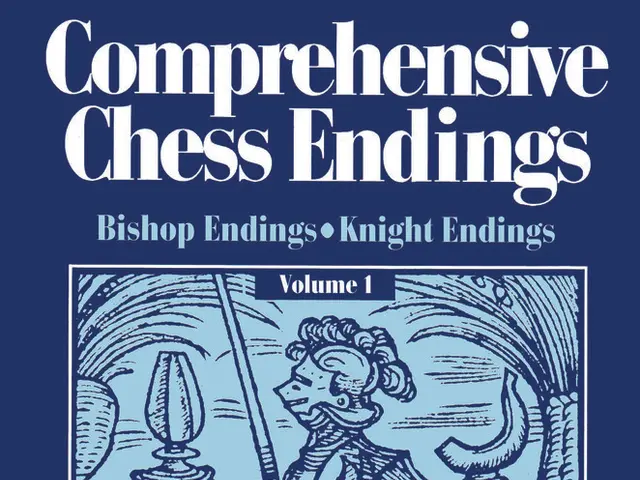Collections on student debt will resume on May 5th; here's what you need to be aware of.
Get ready to face the music, student loan borrowers! The Trump administration is about to reboot forced collections on federal student loans in default starting May 5. This move ends the pandemic-related relief that began in March 2020 and will likely mean garnishing a portion of borrowers' paychecks.
With the restart of collections, all pieces of the student loan machine are back online, marking the official end to the extended relief period. President Biden had paused federal student loan payments several times, with payments resuming in October 2023 but with temporary leniency for borrowers who fell behind until last fall.
Now, as late payments draw consequences, millions of student loan borrowers—including more than 5 million in default and many more on the brink—are watching their credit scores plummet. Meanwhile, the Biden administration's repayment program, SAVE, which links a borrower's loan payments to income and household size, remains frozen since August 2023, caught in a legal bind that poses a threat to the income-driven repayment plans that preceded it.
If you're among the tens of millions of borrowers, log into your account on the federal website StudentAid.gov to learn about your loan status. Keep your contact information up to date both on the website and with your loan servicer. If your loans are in default, expect an email from the Federal Student Aid office in the coming weeks, urging you to contact its Default Resolution Group.
The Education Department will begin forced collections on loans in default on May 5, with tax refunds and other federal payments being withheld and applied toward your debt. Enforcement tactics like wage garnishment of up to 15% of monthly Social Security retirement and disability benefits and your paycheck could follow if your loans remain in default.
If you can't afford your payments, consider income-driven repayment plans, which adjust loan payments based on your income, as they can be a lifeline in times of financial distress. However, navigate the evolving landscape carefully, as the SAVE plan introduced by President Biden is currently stalled in court, challenging the cost of the program and leaving other income-driven plans in limbo.
Understand the repayment plans available to you and examine your options. If you need assistance, seek help from organizations like The Institute of Student Loan Advisors or consult resources such as the Student Debt Crisis Center. In Washington, check out the Washington Student Achievement Council for additional support. Stay informed and proactive; this is your future on the line!
Related:- Millions of student loan borrowers are behind on payments. Here comes the hammer- Millions have had student loans canceled under Biden - despite the collapse of his forgiveness plan- Biden tries again at student loan cancellation, this time for those with financial hardships- Biden's student debt plan is in limbo. Confused? Here are some answers- Supreme Court rebuffs Biden administration plea to restore multibillion-dollar student debt plan
Enrichment Data:
Current Rules for Federal Student Loan Repayment Plans in the United States
As of March 2025, the rules for federal student loan repayment plans are undergoing changes due to legislative adjustments and administrative actions. Here are some key highlights:
1. Repayment Plan Enrollment and Recent Changes
- Income-Based Repayment (IBR) and Income-Contingent Repayment (ICR): The online IDR application is once again available for eligible borrowers to enroll in IBR and other plans.
- Pause in Enrollment: The Department of Education temporarily halted the processing of new enrollments in certain repayment plans, but this pause has been partially lifted.
2. Upcoming Legislative Changes
- New Repayment Plans Post June 2026: Legislation proposes repealing existing ICR plans for new loans after July 1, 2026, and introduces a new Standard Repayment Plan with fixed payments over 10 to 25 years, as well as a Repayment Assistance Plan, which calculates payments based on adjusted gross income. These proposals also suggest capping income-driven payments between 5-20%.
3. Collection Activities
- Restart of Collections: The Treasury Offset Program will resume on May 5, 2025, to collect from defaulted borrowers, followed by administrative wage garnishment notices.
4. Support for Borrowers
- Enhanced IDR Process: The Department plans to simplify the IDR enrollment process, eliminating annual income recertification for borrowers.
- Loan Simulator and Outreach: Efforts include launching tools like the Loan Simulator and AI Assistant (Aiden), as well as conducting outreach via emails and social media to help borrowers choose the best repayment plan.
- The Trump administration's decision to reboot forced collections on federal student loans in default from May 5 will significantly impact student loan borrowers, including those in Seattle, and potentially result in wage garnishment and paycheck deductions.
- As additional millions of student loan borrowers face the prospect of late payments and subsequent consequences, the Biden administration's repayment program, SAVE, remains frozen since August 2023, raising concerns about the future of income-driven repayment plans.
- For those struggling with student loan repayment or personal-finance management, exploring education-and-self-development resources such as The Institute of Student Loan Advisors or the Student Debt Crisis Center can provide valuable assistance and guidance.
- With the American government resuming collections on defaulted loans, it is crucial for borrowers to log into their accounts on the federal website StudentAid.gov and keep their contact information up to date to stay informed about their loan status and potential actions from the Default Resolution Group.
- If borrowers find the current repayment plans challenging or unaffordable, they may consider income-driven repayment plans, which can help adjust loan payments based on income, serving as a lifeline during times of financial hardship.
- As the rules for federal student loan repayment plans evolve following legislative adjustments, it is essential to stay informed about ongoing changes, such as the introduction of new repayment plans and the simplification of the IDR enrollment process, in order to effectively manage and navigate personal finance matters related to student loans.








